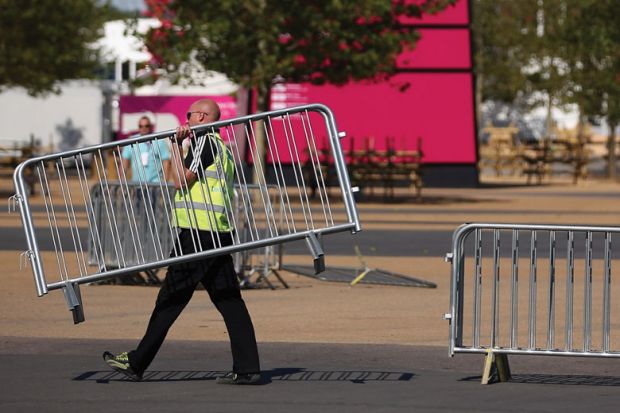Some English universities have altered grading boundaries and changed marking practices amid sector concerns about grade inflation, it can be revealed.
“Degree outcome statements” – which institutions pledged to publish as part of efforts to address concerns about the huge rise in the share of firsts and 2:1s awarded – suggest that a number of institutions took action as the wider row over the issue intensified.
At the University of Salford – where, data show, the share of UK students receiving a first climbed from 16.7 per cent in 2010-11 to 35.2 per cent in 2017-18 – the statement reveals that the threshold for a first was 68.5 per cent until the institution revised the boundary to the more commonly used 70 per cent about four years ago.
Salford says in its document that the lower boundary followed changes made in 2013 “to address a disproportionately low proportion” of students gaining a first or a 2:1.
“However, other changes to the learning environment and experience…contributed to a continued upward trend particularly with regards to the number and proportion of first class awards,” it adds, leading to the readjustment of the boundaries for 2016-17 entrants.
As a result, the share of students gaining a first fell by about 6 percentage points in 2018-19 “to bring it in line with [the] sector average”, the document adds.
The University of Surrey, which went from awarding half of its UK students a first in 2016-17 to a third in 2018-19, says changes to its “internal calibration” of marks had contributed to the fall, according to its statement.
These adjustments included the introduction of new “grade descriptors” that had “improved the clarity of language and provided a greater sense of differentiation between academic levels”.
Nottingham Trent University, another institution that recorded a big decline in the share of firsts in 2018-19 after a rising trend of several years, was among the most explicit about tackling grade inflation.
It says in its statement that it had made changes in the past two years that were “together a specific and principled response to concerns about artefactual grade improvement in the sector”.
“Artefactual grade improvement can come about as a result of several factors, including inappropriate grading of student performance by markers and the complexities of aggregating judgements of performance, and in particular the potentially inflationary effects of the 70-100 first class range.”
Its changes included moving to a numbering system for different grades and away from a marking scale of 0 to 100, the statement says.
Other universities attributed their upward trend in grades more exclusively to factors such as improved teaching, tougher entry standards and the alignment of degree algorithms with those of other institutions.
The University of Greenwich’s statement shows that it used a new algorithm from 2017 that put more emphasis on students’ best final-year marks after a conducting a review that included comparisons with other institutions.
“Given that the degree outcomes were in keeping with the rest of the sector, that outcomes had improved in line with increases in entry standards and employment outcomes, the algorithm was judged to be appropriate,” its statement says. The most recent data show about a third of undergraduates gaining a first at the institution.
Meanwhile, the University of Huddersfield, where the share of UK student firsts grew from 15 per cent to 40 per cent between 2010-11 and 2017-18, says its recent rise in good honours was the “result of initiatives designed to improve teaching quality, the calibre of our teaching staff, and assessment and feedback practice”.
Register to continue
Why register?
- Registration is free and only takes a moment
- Once registered, you can read 3 articles a month
- Sign up for our newsletter
Subscribe
Or subscribe for unlimited access to:
- Unlimited access to news, views, insights & reviews
- Digital editions
- Digital access to THE’s university and college rankings analysis
Already registered or a current subscriber? Login








